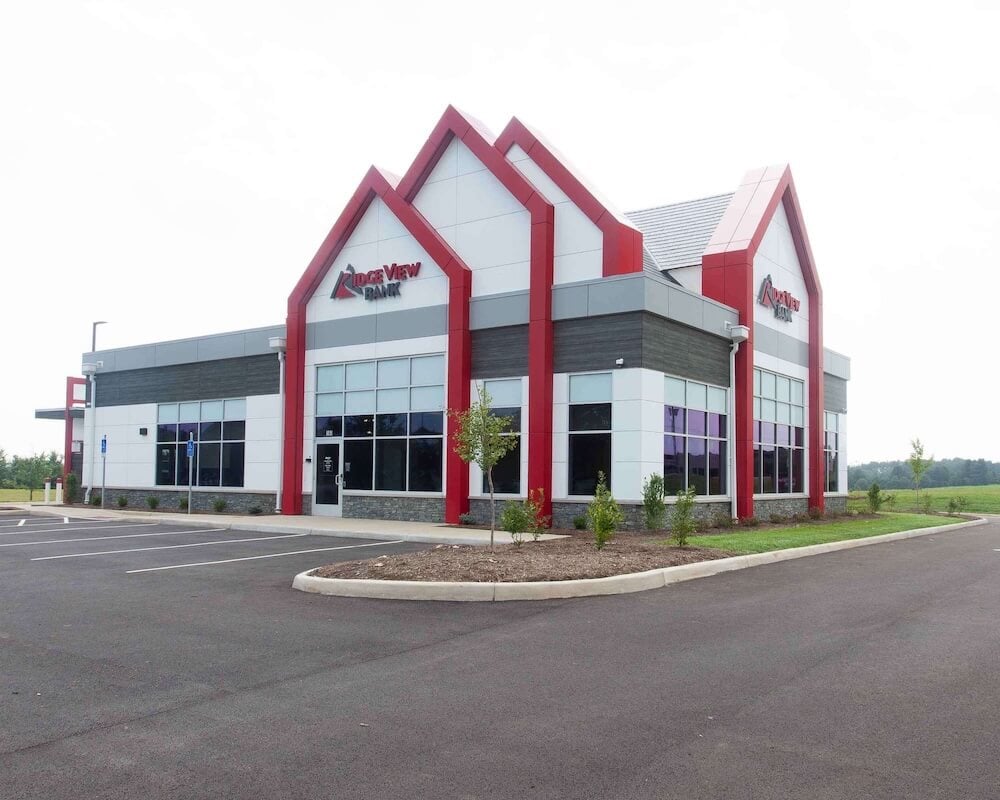In the dynamic landscape of modern finance, designing a bank or credit union goes far beyond bricks and mortar. A well-orchestrated combination of aesthetics, functionality, and innovation doesn’t just shape the physical structure but the entire experience.
There’s no one-size-fits-all solution for creating spaces that resonate with customers and staff. However, there are essential elements to consider when planning a new branch. From reimagining layouts to implementing innovative technology, this article offers an in-depth look at what drives a successful design process.
💡 Planning a new project? To assist financial institutions with their next project, Element has created a cost guide that includes budget and timing estimates reflecting expected 2025 market conditions.
👉 Download 2025 Design and Cost Catalog
1. Always start with a concept phase
Concepting, is the foundational phase of the design process where the initial vision for a branch is developed. It involves generating creative ideas and exploring multiple design directions based on the client’s brand, goals, and spatial needs.
Element’s concepts typically include schematic layouts, material palettes, and early renderings, and is often carried out through collaborative strategy sessions with the client.
The importance of the concepting phase lies in its ability to align all stakeholders on a clear design direction before moving into more detailed and costly stages like design development and construction. It allows for flexibility, iteration, and client feedback, ensuring that the final design reflects both the brand identity and functional requirements.
By securing stakeholder approval at this stage, clients can avoid costly revisions later in the process. Additionally, concepting helps identify Signature Elements like branded walls or unique architectural features that can be consistently applied across additional branches.
Ultimately, concepting sets the tone for the entire project and serves as a strategic bridge between vision and execution.
2. Incorporate your brand and identity
The design of your financial institution will impact those who will connect with your brand. Therefore, your branch must reflect your brand identity. Incorporating elements of your culture, community, and company history into the design will create a consistent customer experience and make your location feel relevant, especially in a small community. A compelling brand image will outlive changing trends and seasonal shifts. Extending beyond a positive customer experience, thoughtful branding will create a lasting impression and differentiate you from the competition. 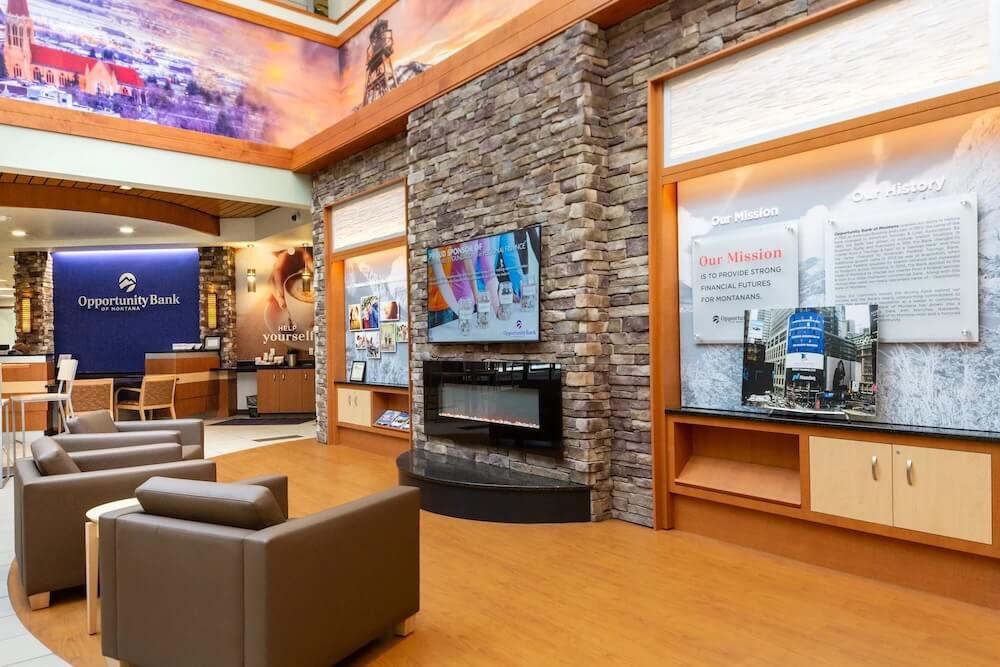
3. Consider the community the branch serves
When building a bank or credit union, the people it serves should be the cornerstone of the design. Communities consist of people from different generations, backgrounds, and socioeconomic statuses — all of which inform how they bank. For example, some people enjoy the inherent connection of face-to-face interactions, while others prefer to handle transactions digitally. Understanding the demographics of the area you plan to serve is instrumental in developing an inclusive design that caters to the specific needs and expectations of your customers. This will help create a sense of trust and belonging that transcends the walls of the bank.
4. Choose the right location
While online banking is becoming increasingly popular, many people still prefer the human interaction that comes with in-person banking. Thus, selecting the right location for your bank can determine how successful it will be. Start by performing an in-depth analysis.
Key factors to consider:
- Demographics
- Nearby competition
- Market demand
- Traffic patterns
- Proximity to relevant businesses
- Accessibility
This information will help determine a location’s potential for growth before you invest in a build-out. Keep in mind that securing an ideal site and investing in the latest technology is not enough. The exterior aesthetic and visible signage must resonate with people passing by and inspire them to explore what’s inside.
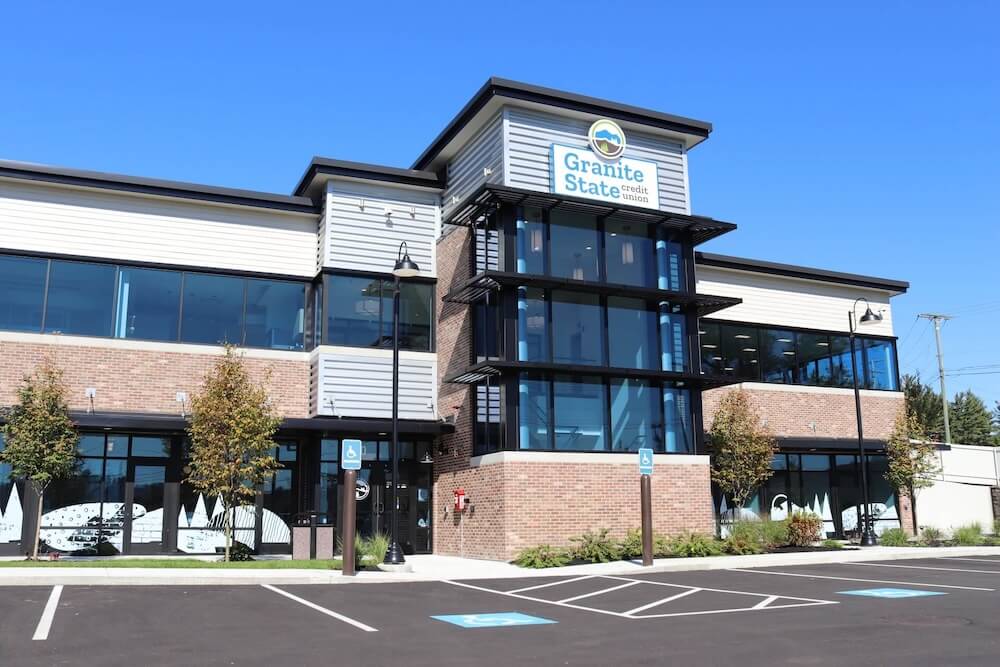
5. Make customers feel welcome
Designing a bank or credit union is about more than just looks. While a warm atmosphere and natural lighting will help make customers feel at ease, it’s equally important to optimize space with a thoughtful layout. Placing a lobby or welcome area near the door will set the tone for a positive customer experience as soon as they enter. Additionally, thoughtful extras like concierge service, refreshments, or a self-serve coffee station can make the bank feel like an enjoyable place to be.
Don’t stop with comfortable waiting areas. Offering a range of open, closed, and flexible meeting spaces will let customers know they can engage in quick or private financial discussions with ease. You will also want to incorporate easy-to-understand signage to help customers navigate the bank without confusion.
Fostering an inviting atmosphere can be more powerful than providing specific services. Making customers feel welcome inspires return visits, helps build trust, and attracts talented people who want to work at a bank that values the customer experience.
6. Design for efficiency and functionality
It’s essential to consider the services you plan to offer and the ways customers will interact with staff when designing an effective blueprint for your bank. To best utilize your space, prioritize easy access and navigation, effective signage, comfort, and well-integrated technology. Embrace adaptability throughout the design process, too. You will inevitably recognize customer preferences and technology changes over time, which can help you develop a flexible design that can be altered in the future. For example, teller stations are a staple, but the number you start with may change as customer needs shift. Empower customers to complete transactions independently by strategically placing ATMs and self-service coin counters in your branch. And provide additional services like financial planning and advising to ensure they can access required support. Lastly, good bank design is not only about your members or customers. Your employees deserve equal attention, so be sure to consider their workspace and well-being. Practicality and forward thinking across the board will help you create a space that serves everyone for years to come.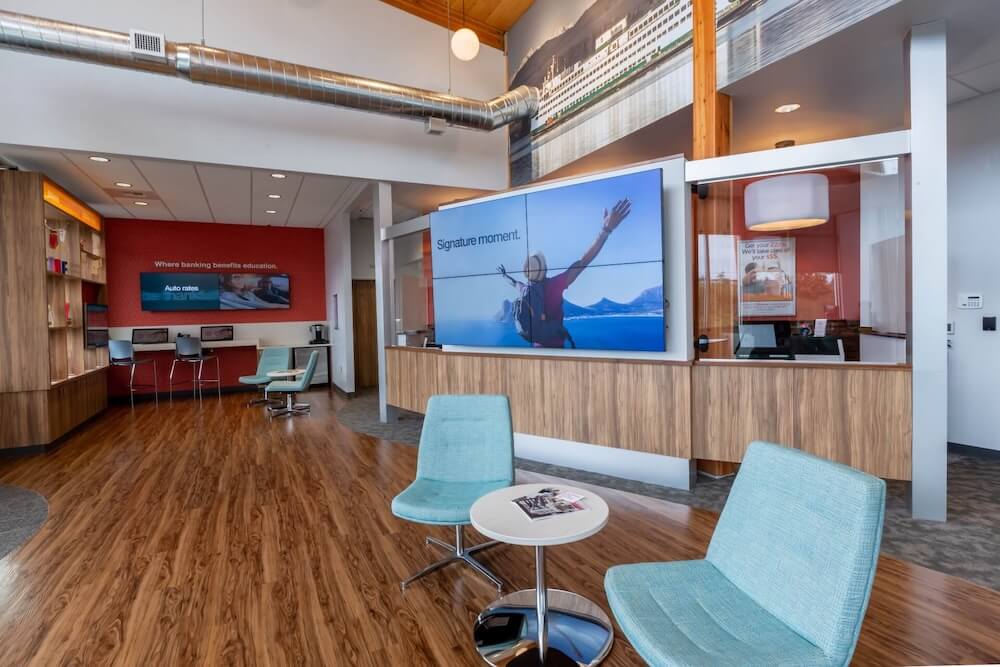
7. Implement innovative technology
In today’s rapidly evolving landscape, innovative banking technology isn’t just an option; it’s a strategic way for banks to stay relevant, competitive, and responsive. Promoting efficiency and streamlining transactions with technology elevates your brand image, reduces operating costs, and improves the customer experience. Conversely, being slow to adapt to new trends can have negative repercussions, such as a poor reputation and fewer return visits. Modernizing your financial institution with useful technology, like these digital brochure displays, and being prepared to incorporate future cutting-edge solutions will help position you as a leader rather than a follower. Furthermore, staying ahead of new trends will attract all age groups and help you achieve a bigger market share against larger banks that may have a different approach.
8. Embrace sustainability and energy efficiency practices
Banks can make a significant impact on the environment and their business by adopting environmentally friendly practices. Opting for sustainable materials during the building process and implementing energy-efficient lighting, heating, and cooling systems can create healthier indoor spaces and reduce pollution. In addition to being eco-friendly, these practices also help banks or credit unions lower operating costs. Beyond the financial benefit, minimizing your carbon footprint demonstrates your commitment to social responsibility. This concerted effort to protect the planet will appeal to environmentally conscious customers and staff, strengthen your bank’s reputation as a forward-thinking institution, and increase your growth potential.
9. Future-proof the design
Once you have transformed your bank building design concept into a reality, changes can take time and incur significant expenses if not previously considered. One of the best ways to set your financial institution up for long-term success is to ensure it is equipped to adapt to changing customer preferences and behaviors. Embracing a flexible design framework, such as an open floor plan, will empower you to rearrange spaces, integrate new technology, and swiftly respond to challenges that arise. Proactively future-proofing your design empowers your bank or credit union to stay agile and ahead of market trends — positioning your bank as a leading, customer-centric business.
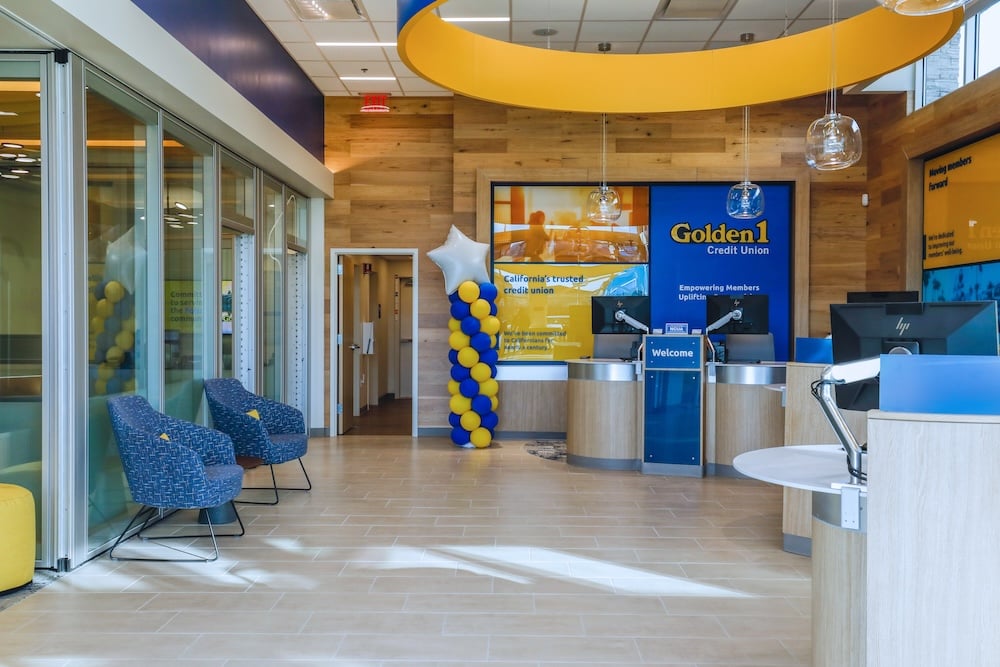
10. Collaborate with architects and design professionals
There is no magic formula for designing a bank building or credit union. However, collaborating with the right experts can drive profitability and minimize risk. The leading cause of unexpected cost overruns during a build-out is unexpected change orders after construction begins. Bank architecture professionals who understand your business, customers, and necessary requirements can help you formulate a design that can be executed according to plan. From in-depth market analyses to ensuring your location has the proper permits and implementing your technology, architects specializing in banks will be better positioned to set you up for success than a general contractor.
Conclusion
For those embarking on new financial institution construction projects, the importance of forward-thinking designs that adapt to meet changing demands can’t be overstated. From choosing the right location to incorporating your brand identity, a lot goes into designing a bank or credit union. Experts at The Element Group can help you design and build a thriving financial institution. Once you’re up and running, Element can remain on your team to help implement new technology, train staff, and keep you ahead of the competition. Interested in learning more about The Element Group? Check out some of our work.
